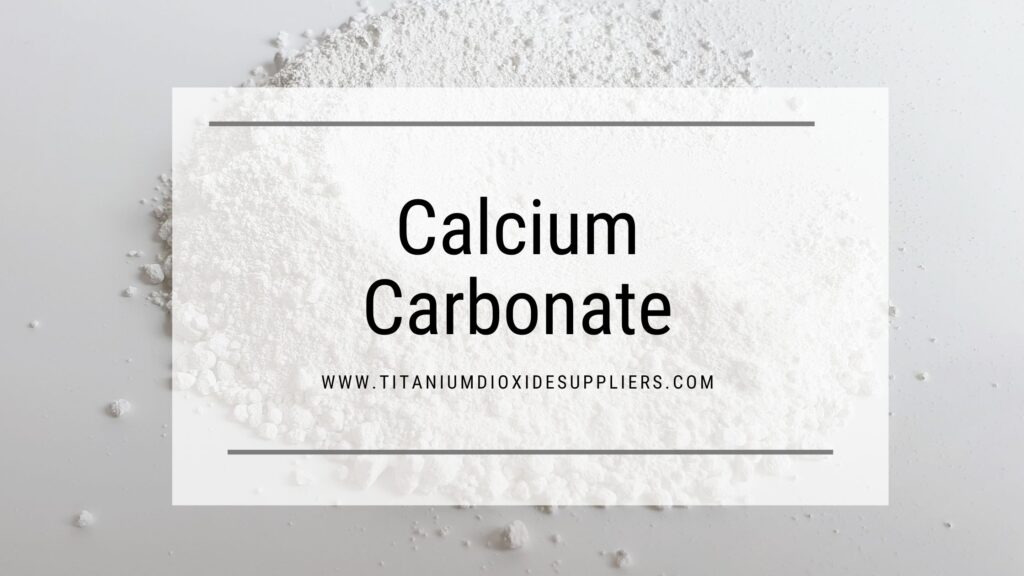When you think of essential industrial materials, Calcium Carbonate (CaCO₃) might not be the first name that comes to mind — yet it plays a pivotal role across dozens of sectors. From pharmaceuticals to plastics, from agriculture to architecture, this humble white powder quietly drives innovation and productivity.
In this blog, we’ll explore what calcium carbonate is, how it’s made, its key applications, and why industries across the globe rely on it every single day.
What Is Calcium Carbonate?
Calcium carbonate is a naturally occurring mineral compound made up of calcium, carbon, and oxygen. It’s found in rocks such as limestone, marble, and chalk, and it also forms the main component of shells of marine organisms, snails, and eggs.
Chemically, its formula is CaCO₃, and depending on its origin and processing, calcium carbonate can appear in different forms: powdered, precipitated, or ground.
Types of Calcium Carbonate
There are primarily two forms used in industries:
- Ground Calcium Carbonate (GCC)
Derived directly from natural limestone or marble, it’s ground into a fine powder and used as a filler or coating. - Precipitated Calcium Carbonate (PCC)
Produced synthetically through a controlled process involving chemical precipitation. It has a finer, more uniform particle size and is used when high purity is required.
Applications of Calcium Carbonate
Calcium carbonate’s unique properties — non-toxicity, whiteness, and chemical stability — make it indispensable across a wide range of industries.
1. Plastics & Polymers
Used as a filler in plastic products (like PVC pipes, packaging films, and cables), calcium carbonate improves mechanical strength, reduces production costs, and enhances surface finish.
2. Construction Industry
A key ingredient in cement, concrete, and building materials, calcium carbonate adds durability and workability. It also serves as a base material for lime production.
3. Paints & Coatings
Calcium carbonate acts as a functional extender, improving brightness and opacity while reducing the use of expensive pigments.
4. Paper Industry
In papermaking, especially in modern alkaline processes, calcium carbonate is used as a coating pigment and filler to enhance brightness, opacity, and smoothness.
5. Pharmaceuticals & Healthcare
Used in antacids and calcium supplements, calcium carbonate is safe for human consumption and helps neutralize stomach acid or prevent bone loss.
6. Food & Beverage
Listed as E170, calcium carbonate is used in baking powders, food coloring agents, and as a dietary calcium fortifier.
7. Agriculture
Used to neutralize soil acidity (agricultural lime) and supply calcium to plants, promoting healthier growth and yield.
8. Environmental Uses
Calcium carbonate plays a role in flue gas desulfurization, helping to remove sulfur dioxide from power plant emissions.
Why Industries Prefer Calcium Carbonate
Calcium carbonate is favored not just because of its abundance, but because it offers:
- Low cost compared to synthetic fillers and additives
- Chemical inertness in many reactions
- High brightness and opacity, especially in paper and plastics
- Versatility across liquid and dry applications
- Environmental compatibility, being a naturally occurring and recyclable material
Choosing the Right Grade of Calcium Carbonate
Depending on the application, businesses may need specific particle sizes, brightness, purity levels, or surface-treated grades of calcium carbonate. This is why it’s critical to choose the right supplier who understands industry-specific requirements and can offer consistent quality.
For example:
- Pharma-grade calcium carbonate must meet stringent purity and safety standards.
- Paint-grade calcium carbonate requires optimal particle dispersion and light reflectivity.
- Food-grade calcium carbonate must be approved by regulatory authorities like FSSAI, FDA, or EFSA.
Calcium Carbonate in the Circular Economy
As industries move toward sustainability, calcium carbonate is being recognized for its eco-friendly qualities. It’s used in biodegradable plastic alternatives, contributes to carbon capture technologies, and is recyclable in paper and packaging industries.
Conclusion
Whether you’re walking on a concrete pavement, flipping through a glossy magazine, sipping mineral water, or applying sunscreen, chances are, calcium carbonate has played a role in your experience. This versatile compound, often overlooked, continues to power a range of critical applications that touch our lives daily.
If your business relies on materials that need purity, stability, cost-efficiency, and functionality, calcium carbonate may just be your hidden hero. And choosing a reliable, industry-experienced supplier ensures that you get the performance and consistency your processes demand.
FAQs About Calcium Carbonate
Q1: Is calcium carbonate safe for human consumption?
Yes. Food and pharmaceutical grades of calcium carbonate are non-toxic and approved by major food safety authorities globally.
Q2: What’s the difference between GCC and PCC?
Ground Calcium Carbonate (GCC) is derived from natural sources, while Precipitated Calcium Carbonate (PCC) is synthetically produced and offers higher purity and finer particle sizes.
Q3: Can calcium carbonate be used in water treatment?
Yes, it helps in adjusting pH levels and removing impurities in water treatment processes.
Q4: How is calcium carbonate stored?
It should be stored in dry, cool, and sealed conditions to prevent moisture absorption and degradation.
Q5: Is calcium carbonate eco-friendly?
Absolutely. It’s a natural, recyclable material that also plays a role in reducing emissions and enhancing sustainability in industrial processes.





